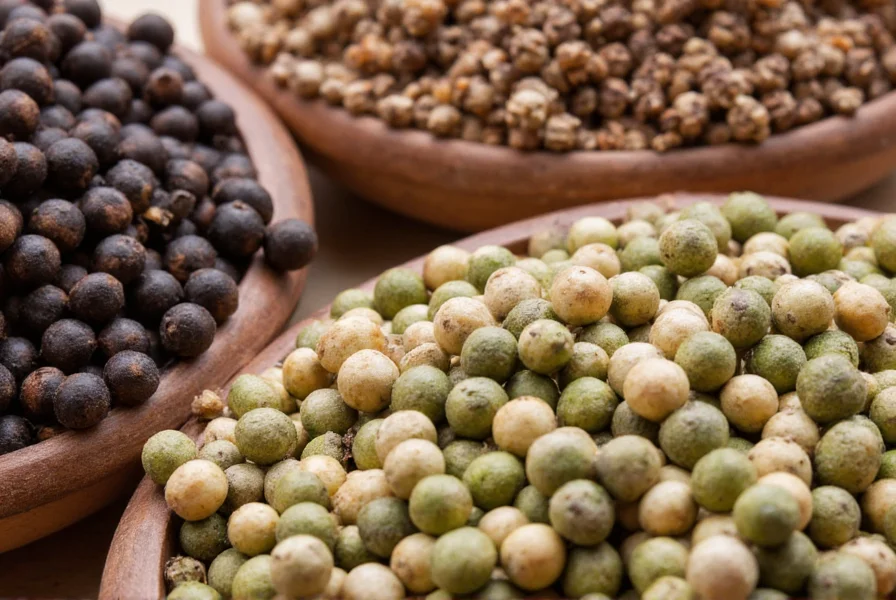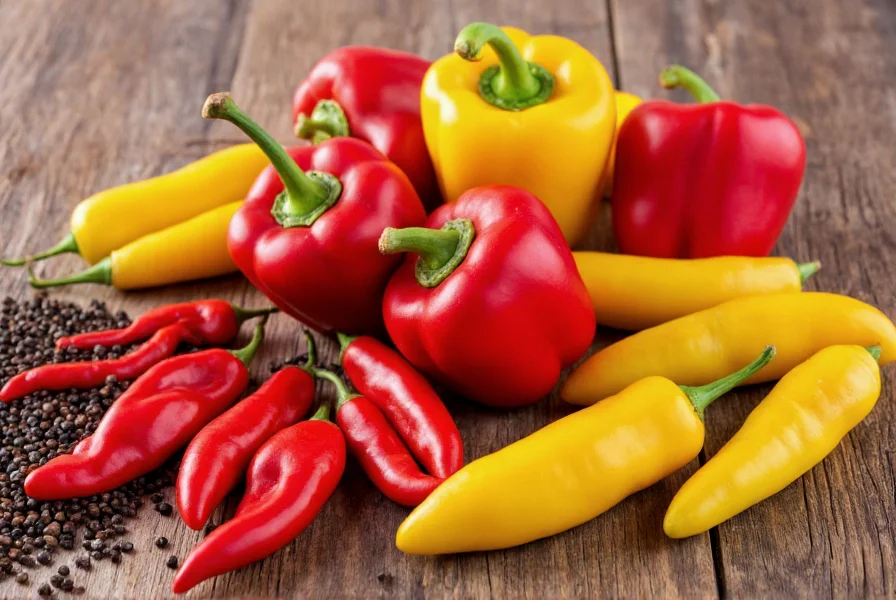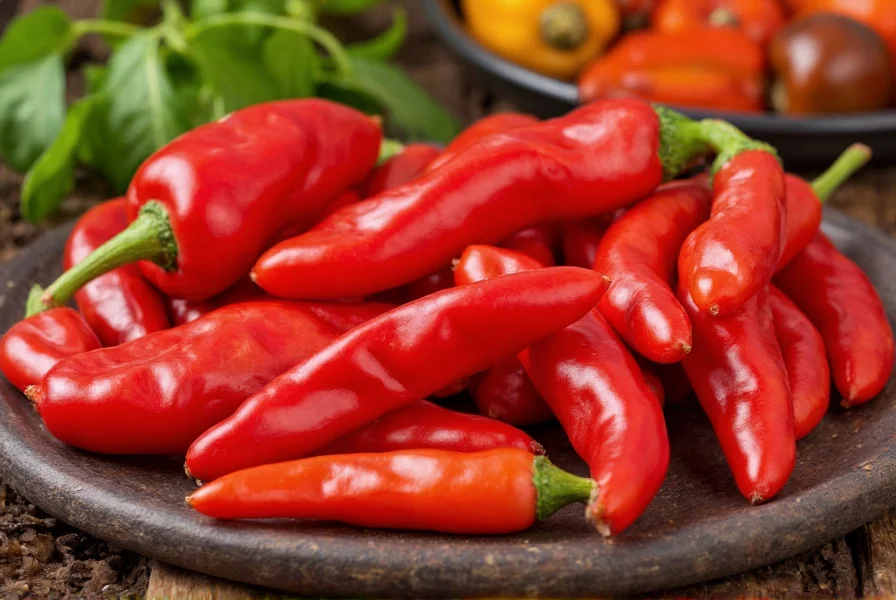Pepper definition: Pepper refers to two distinct plant groups—Piper nigrum (black, white, and green peppercorns) and Capsicum species (chili peppers, bell peppers). True pepper (Piperaceae family) originates from India, while chili peppers (Solanaceae family) are native to the Americas. This distinction is critical when discussing culinary uses, heat levels, and botanical characteristics.
Understanding the precise pepper definition prevents confusion in cooking and botany. When someone asks "what is pepper," they're typically referring to either the ubiquitous black peppercorn or the colorful array of chili varieties. Both have shaped global cuisine but belong to entirely different plant families with unique properties.
Botanical Classification: True Pepper vs. Chili Peppers
The term pepper creates frequent misunderstanding because it applies to two unrelated plant families. Let's clarify:
| Characteristic | True Pepper (Piper nigrum) | Chili Peppers (Capsicum spp.) |
|---|---|---|
| Plant Family | Piperaceae | Solanaceae (nightshade) |
| Native Region | Southwest India | Central/South America |
| Active Compound | Piperine (sharp, woody heat) | Capsaicin (burning sensation) |
| Heat Measurement | Not measured in Scoville | Scoville Heat Units (SHU) |
| Common Forms | Black, white, green peppercorns | Bell peppers, jalapeños, habaneros |
True Pepper: The King of Spices
Black pepper definition centers on dried Piper nigrum berries. These climbing vines produce fruit that becomes:
- Black peppercorns: Unripe berries dried in sun (wrinkled, strongest flavor)
- White pepper: Ripe berries with outer layer removed (milder, earthy)
- Green pepper: Unripe berries preserved (fresh, herbal notes)
Historically called "black gold," pepper drove global trade routes. Ancient Romans used it as currency, and medieval European kitchens displayed pepper prominently as a status symbol. Today, Vietnam produces over 30% of the world's black pepper, followed by Brazil and Indonesia.

Chili Peppers: The Capsicum Spectrum
When discussing pepper plant types in the Capsicum family, we encounter over 30 species with five domesticated varieties. The difference between black pepper and chili peppers becomes evident here:
- Capsicum annuum: Includes bell peppers, jalapeños, cayenne (most common)
- Capsicum frutescens: Tabasco peppers, malagueta
- Capsicum chinense: Habaneros, ghost peppers (extreme heat)
- Capsicum baccatum: Aji peppers (South American varieties)
- Capsicum pubescens: Rocoto peppers (hairy leaves, black seeds)
The Scoville scale measures chili heat from 0 (bell peppers) to 2,200,000+ SHU (pepper X). This pepper heat comparison helps cooks select appropriate varieties. For example, a poblano (1,000-2,000 SHU) offers mild warmth, while a Carolina Reaper (1,400,000-2,200,000 SHU) delivers extreme heat.
Culinary Science of Pepper
Understanding pepper definition in cooking requires examining how heat compounds interact:
- Piperine in black pepper: Soluble in fat and alcohol, not water. Best added during cooking to release flavor.
- Capsaicin in chilies: Binds to pain receptors, creating burning sensation. Neutralized by dairy (casein) or fats, not water.
Chefs leverage these properties strategically. In Indian cuisine, black pepper appears in garam masala, while chilies feature prominently in vindaloo. Thai cooking distinguishes between prik leung (black pepper) and prik (chilies), demonstrating the cultural importance of precise pepper terminology.
Nutritional Profile Comparison
Both pepper types offer health benefits, though through different compounds:
| Nutrient | Black Pepper (1 tsp) | Bell Pepper (1 medium) | Habanero (1 pepper) |
|---|---|---|---|
| Calories | 9 | 37 | 18 |
| Vitamin C | 2% DV | 169% DV | 105% DV |
| Vitamin K | 7% DV | 11% DV | 6% DV |
| Antioxidants | Piperine (bioavailability enhancer) | Lutein, zeaxanthin | Capsanthin, quercetin |
Research shows piperine may increase nutrient absorption by up to 2000%, explaining why black pepper often accompanies turmeric. Meanwhile, chili peppers' capsaicin shows potential metabolic benefits in clinical studies.

Common Misconceptions About Pepper
Several myths persist in pepper definition explanations:
- Myth: All peppers are hot
Fact: Bell peppers contain zero capsaicin - Myth: Black pepper and chili peppers are related
Fact: They evolved heat independently through convergent evolution - Myth: The seeds make peppers hottest
Fact: Placenta (white ribs) contains most capsaicin - Myth: Milk neutralizes all pepper heat
Fact: Works for chilies (capsaicin) but not black pepper (piperine)
Practical Applications in Cooking
Mastering pepper culinary uses transforms dishes:
- Black pepper: Grind fresh for maximum piperine release. Add late in cooking to preserve volatile oils.
- Chili peppers: Remove seeds and ribs to reduce heat. Roast for sweeter flavor profile.
- Substitutions: In recipes calling for "pepper," determine if context means black pepper or chili.
Professional kitchens maintain pepper stations with multiple varieties. Understanding the complete pepper definition helps home cooks replicate this precision. For example, a dish specifying "cracked pepper" requires coarsely ground black peppercorns, not chili flakes.
FAQ
What's the difference between black pepper and chili peppers?
Black pepper comes from the Piper nigrum plant (Piperaceae family) and contains piperine, creating a sharp, woody heat. Chili peppers belong to the Capsicum genus (Solanaceae family) and contain capsaicin, producing a burning sensation measured in Scoville units. They're botanically unrelated despite both being called "pepper."
Why are both called pepper if they're different plants?
European explorers named chili peppers "pepper" because their pungency resembled black pepper, which was highly valued in medieval Europe. This misnomer stuck despite the plants having no botanical relationship. The term "pepper" for Capsicum species appears in English texts from the 1580s.
Which pepper variety has the highest nutritional value?
Bell peppers (especially red varieties) contain the highest vitamin C content—169% of daily value per medium pepper. However, black pepper's piperine enhances absorption of other nutrients. For antioxidant diversity, combining different pepper types provides the broadest nutritional benefits.
How do I reduce the heat of chili peppers?
Remove the white placental ribs and seeds (where most capsaicin concentrates). Soaking chopped chilies in vinegar or salt water for 10-15 minutes reduces heat. Cooking with dairy (yogurt, cream) or acidic ingredients (lime juice) also neutralizes capsaicin. For extreme chilies, wear gloves during preparation to avoid skin irritation.
Does pepper expire or lose potency over time?
Ground pepper loses potency within 4-6 months as volatile oils evaporate. Whole peppercorns retain flavor for 1-2 years when stored in airtight containers away from light. Chili peppers maintain heat longer but lose vibrant color and flavor complexity over time. Freezing whole chilies preserves them for up to a year.











 浙公网安备
33010002000092号
浙公网安备
33010002000092号 浙B2-20120091-4
浙B2-20120091-4